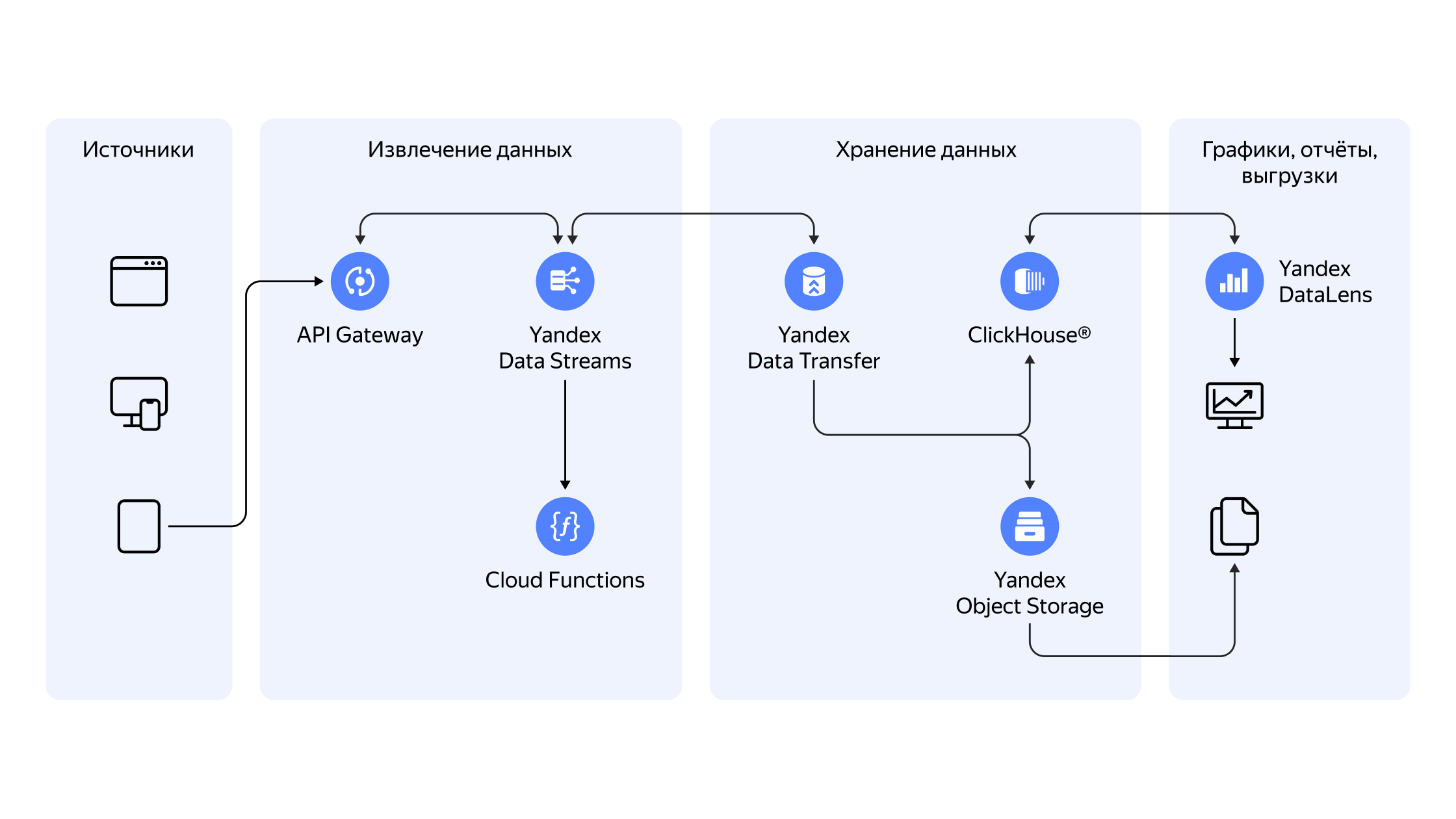
New developments in the serverless ecosystem
Introducing a new Yandex Cloud Apps, access to Yandex Cloud Logging, Websocket support in API Gateway, and function instance reservations.
Using the Serverless model to host your applications in the cloud is now becoming an effective strategy. This year, the Serverless team worked on features needed to facilitate easy onboarding for existing customers. These features make it even easier to integrate serverless technology into existing traditional infrastructure. To solve the issue of cold starts, it is now possible to create Cloud Function and Serverless Container pre-configured instances. Moreover, API Gateway now supports Websockets.
Yandex Cloud Apps
We are releasing a new service, Yandex Cloud Apps in Public Preview.
Using Yandex Cloud Apps, you can deploy a pre-built cloud-based application from a directory with a single click and then customize it as you see fit. The service will allow users to try out serverless technologies while also demonstrating the ecosystem’s capabilities through real-world examples.
The core service is provided for free. Users will only be charged for the Yandex Cloud resources they use.
The following applications are available in Yandex Cloud Apps at the time of launch:
- an application for scheduling the activation and deactivation of virtual machines
- an application for scaling a group of virtual machines on a schedule
- an image resizer in Object Storage
- a Telegram bot
- a serverless container with Django
- an application for collecting cloud resource usage metrics
Yandex Cloud Apps will support more services in the future, making it easier to deploy complex applications in Yandex Cloud, and you will also be able to create your own application templates.
In this article, we’ll talk about:
Yandex Cloud Logging
The service for aggregating and reading logs of user applications and Yandex Cloud resources has been made public. It is now subject to the billing rules and SLA.
Yandex Cloud Logging allows you to read and write service and user application logs, grouping messages into log groups. Thanks to its advanced filtering, the service lets you quickly search through the logs of cloud resources and facilitates debugging your infrastructure and applications. You can work with logs over the API or CLI. It is now possible to upload logs to Object Storage using Data Streams.
Yandex Cloud Logging

WebSocket in Yandex API Gateway
Yandex API Gateway is a service for building API gateways that supports the OpenAPI 3.0 standard and a set of extensions for integrations with other cloud services. We’re integrating WebSocket into API Gateway, allowing all API gateways to support web socket connections. The service is available in Public Preview and is free of charge.
The primary events when working with web sockets—establishing a connection, sending data to a web socket, and closing/breaking the connection—can all be configured via conventional integrations in the OpenAPI specification of the API gateway. In addition, the Yandex Cloud public API (SDK, GRPC, yc) now includes the following methods for managing web sockets from client server code: get connection data, send data to the client, and close the connection.
Yandex API Gateway
New Serverless Ecosystem Features
User VPCs in Yandex Cloud Functions
You can now run features and containers in a virtual private network (VPC). This will enable functions to communicate with private resources like managed databases and virtual machines.
Previously, any load that had to be migrated to Yandex Cloud Functions required databases or other services to have internet access. Only then would they be able to interact with serverless computing services. Many users were unable to use serverless for their projects because their infrastructure could not be accessed directly from the internet. As a result, they had to either give up the idea of using it or limit its use to stand alone tasks that did not require interaction with the main contours.
Our users can now use Functions and Containers in their own network infrastructure.
Reserving function instances
Reserving multiple function instances solves the “cold start” problem. It is now possible to keep multiple instances of slow-starting functions, like those coded in Java, warmed up and ready to handle requests. The update applies to Cloud Functions (billing rules) and Serverless Containers ([billing rules](https://cloud.yandex.ru /docs/serverless-containers/pricing)).
Automate incoming mail processing. Triggers
When a new email is received, Mail Trigger will execute user-defined Cloud Functions. When the trigger is created, the service automatically generates the email address.
Yandex Cloud Functions
Yandex IoT Core Broker
We are removing barriers and broadening the possibilities for IoT device communication.
MQTT is a popular IoT protocol that supports a variety of devices, such as sensors, actuators, etc. In order to exchange data with one another, MQTT devices require a broker, a server that acts as a hub. You have the option of building a server locally and deploying it on a rented virtual machine, or use our multi-tenant pay as you go solution. Using this type of broker, you can organize a smart home or automate production tasks.
Yandex IoT Core has already provided similar functionality, but with a narrower focus: facilitating a native communication channel between users' IoT devices and cloud platform resources such as databases, DataLens, and computing resources. As a result, the existing MQTT broker implementation imposed a large number of constraints on the methods of exchanging messages within the service (the IoT Core model from GCP was used).
The new broker will enable users to create their own MQTT broker with no restrictions on how messages are exchanged.
